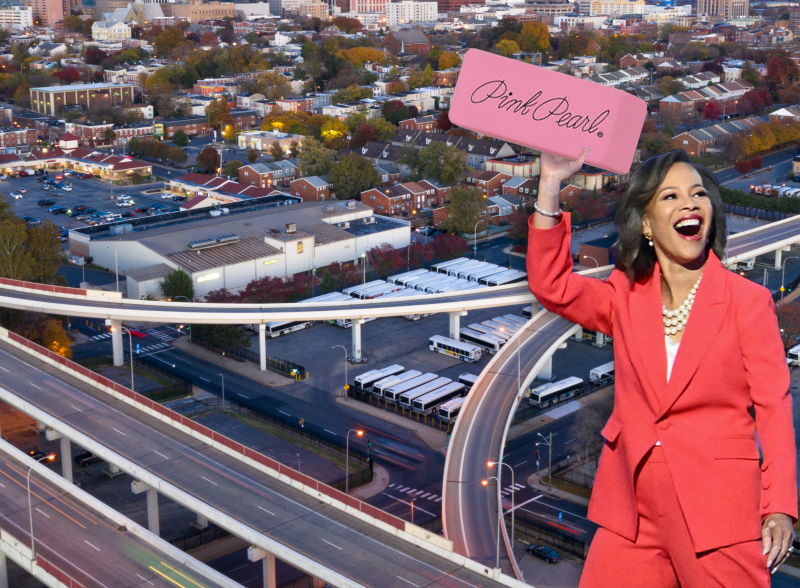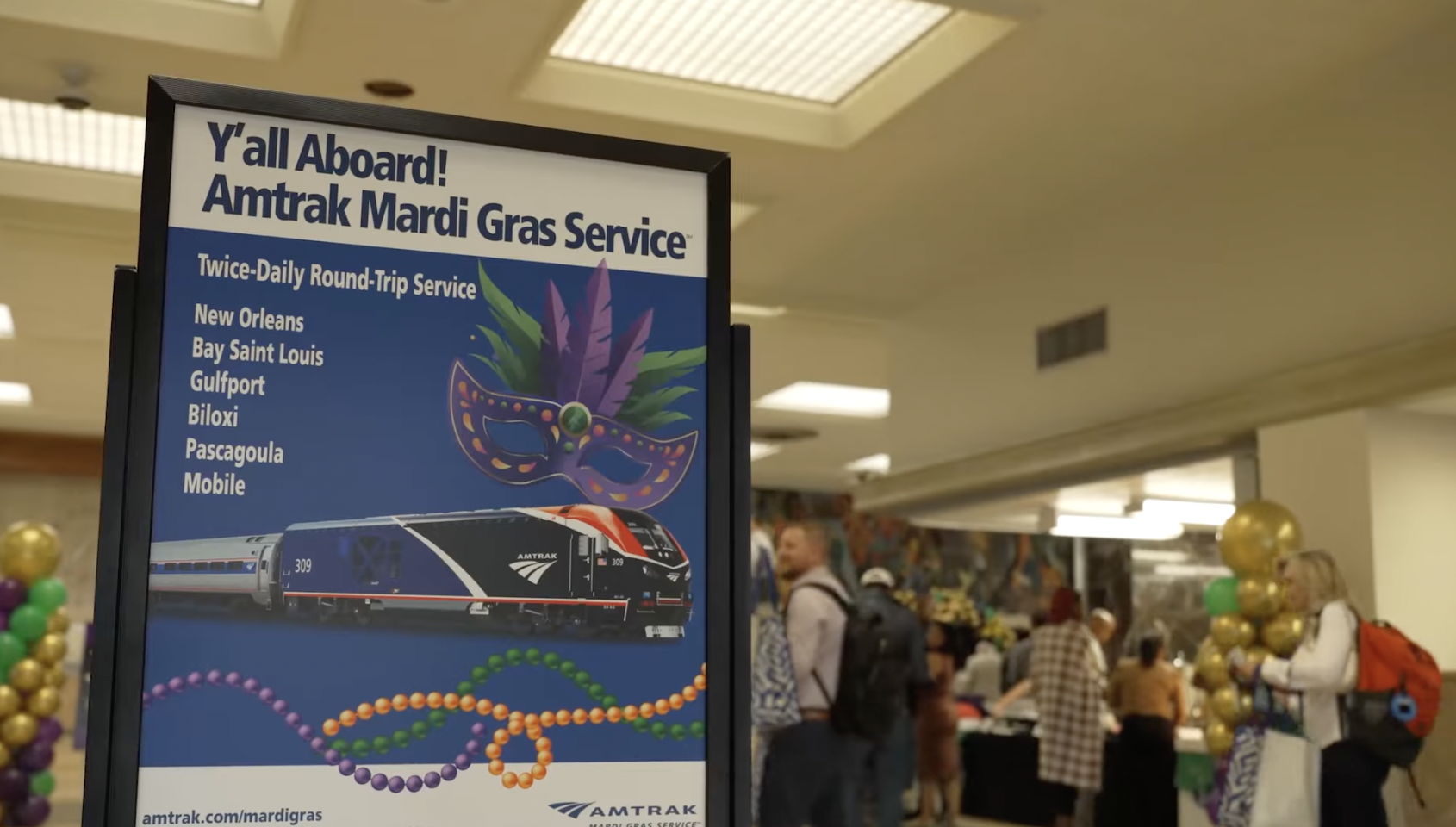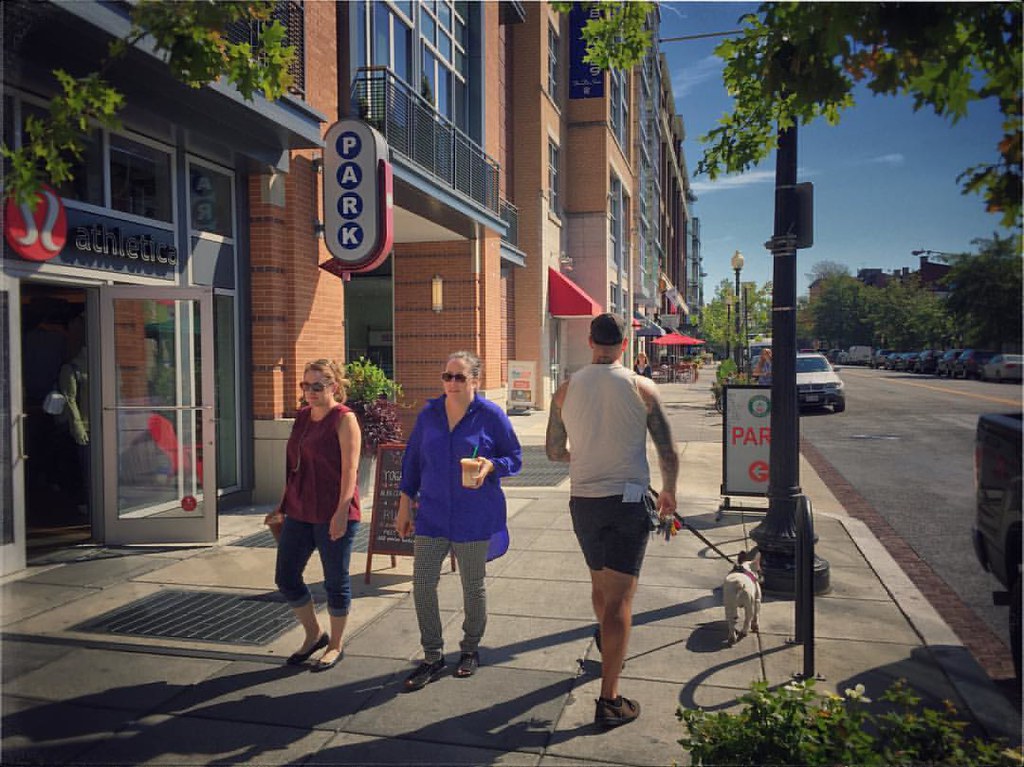The transit authority that serves Washington D.C. is betting big on buses, not rail, to balance the books today and plan for the future — and with transit agencies across America working with leaner budgets for just about everything, some wonder if others need to follow their lead.
For the first time in 50 years, WMATA — commonly known as Metro — has revamped its bus system to deliver “more frequent, reliable, and user-friendly bus service.” Although service changes are common as transit agencies shuffle their resources to match changes in demand, the overhaul known as the “Better Bus Network” is part of a uniquely holistic regional vision that deemphasizes new rail projects in favor of expanding bus capacity — and maximizing the train service they’ve already got.
Perhaps counterintuitively, the new bus alignment manages to expand capacity by eliminating 527 stops — around five percent of all stops total — through combining those that are too close together in an effort to speed up service overall. Routes themselves were streamlined to better serve “schools, workplaces, and key destinations.”
The update also overhauled how riders will navigate buses, with new route names to indicate where a line serves with new bus stop signs to match. The transit authority also touts that “many routes will have improved frequencies.”
That new “resource-neutral” network, though, still required Metro to make hard choices.
“[They had to] make trade-offs,” said Kai Hall, policy manager for Greater Greater Washington. “For example, if they wanted to establish a new route that serves communities that previously didn't have access to bus service, they would have to redistribute resources from other routes, either by reducing service, shortening routes, or eliminating them.”
Metro’s bus overhaul has helped spark a transit rethink across the region, too. The same weekend the Better Bus Network launched, two suburban Maryland agencies — RideOn of Montgomery County and TheBus of Prince George’s County — also launched redesigned bus systems of their own.
And the region’s not stopping there. Montgomery County hopes to bring bus rapid transit, dubbed “Flash BRT,” on the Route 355 corridor; in neighboring Virginia, meanwhile, the Northern Virginia Transportation Authority (NVTA) formally adopted an ambitious plan for up to 28 new bus rapid transit routes over more than 170 miles of dedicated bus lanes. $883 million has already committed by the NVTA towards five segments.
Pursuing these projects, Hall says, is “an opportunity to still provide rapid transit services at lower costs.” However, it asks regional leaders to “muster the political courage…to redistribute streetspace away from cars and parking and to transit.”
If all this comes to fruition, the D.C. metropolitan area will see a lot more buses on its roads soon, whether in separate lanes or mixed traffic. That, Hall predicts, will lead to “huge improvements in access to key destinations and reductions in the transportation time tax for all road users — including drivers.”
Where does rail stand?
Of course, the bus isn’t the only way to get around the D.C. region by transit; WMATA also operates Metrorail which is the second busiest rail system in the country.
But even with strong ridership relative to other systems, the Washington Post notes that Metrorail passenger numbers are “still about a third lower than in 2019” — contrasting to bus ridership which “is actually higher” than it was pre-pandemic. And while the metro is much faster and more frequent than the bus, it requires more commitment to build, operate, and expand.

The Washington Post points to cost and speed as two specific problems affecting rail’s viability in the greater DC region. Maryland’s Purple line, for instance — which will eventually connect several Metrorail lines in suburban Maryland and eliminate the need for those riders to pass through the nation’s capital — is currently “five years and $4 billion dollars over its original budget.” While that is handled by a different agency, Metro’s last major rail project, the Silver line extension to Ashburn and Dulles Airport, also came in delayed and over budget.
Those sorts of overruns may help explain why the “Bloop” — a proposed new rail project to reduce a crucial bottleneck in the central D.C. corridor — is no longer being pursued by authority officials. Cost estimates for that project were between $30 billion to $35 billion, with construction taking two decades. And agency officials don’t appear to be rushing to replace it with other rail projects.
“There’s no indication that WMATA intends to revive new rail projects at this time, so I sense that they are done for the long term,” Hall says.
Just because they’re not building new rail, though, doesn’t mean that D.C. isn’t maximizing their existing train service. Ahead of the “Better Bus Network” launch, Metro also announced service changes to Metrorail, like expanding weekend hours, increasing frequencies, and balancing out service.
One piece of rail infrastructure that will not benefit, however, is the controversial D.C. Streetcar. The two-mile line is being phased out in 2026 despite being less than a decade old, after years of criticism that it doesn’t serve the community it runs through —and that the larger streetcar network it was supposed to be a part of never came to fruition. This speaks to another issue affecting rail’s viability: building rail that is useful to the people.
Looking to the future
Though transit officials seem to see buses as the future of mobility across the D.C. region, trains remain a cornerstone of the larger mass transportation network. And even with more investment, area officials acknowledge that buses alone can’t meet the capacity that metro service can provide, especially as the D.C. region continues to grow.
“We cannot sacrifice rail investments just because it’s hard,” Virginia State Senator Scott Surovell told the Washington Post. And Hall opines that “I don't think continuing a pipeline for rail expansion and improving bus service are mutually exclusive.”
Additionally, there are many opportunities for Metro and other area transit agencies to better utilize existing rail. The MARC and VRE rail systems, for example, primarily service weekday peak hour commuters that head into D.C. in the mornings and then back out to Maryland and Virginia, respectively, in the afternoons. Balancing out trains on those corridors throughout the day could provide more rail capacity without requiring the bus alternative or a sizable infrastructure project.
The “Better Bus Network” and changes to Metrorail have been in effect for less than a month, making any conclusion about success or failure premature — especially during turbulent times for public transportation. Agencies nationwide are grappling with fiscal cliffs while politics has delayed state support, if any at all. One only needs to look to Philadelphia for a warning as its transit agency is cutting 45% of service due to its “doomsday budget.”
Despite these headwinds, though, advocates like Hall are optimistic about D.C.'s bus-forward future. And he wonders if other places across the country could take notes out of the District's playbook — at least if their Better Bus experiment pans out.
“If buses can deliver on connections to destinations and reduce the transportation time tax, then I would deem the pivot to be successful,” he added.
Editor's note: an earlier version of this article incorrectly indicated the Northern Virginia Transportation Authority (NVTA)'s planned bus rapid transit network and has been updated. We regret the error.






